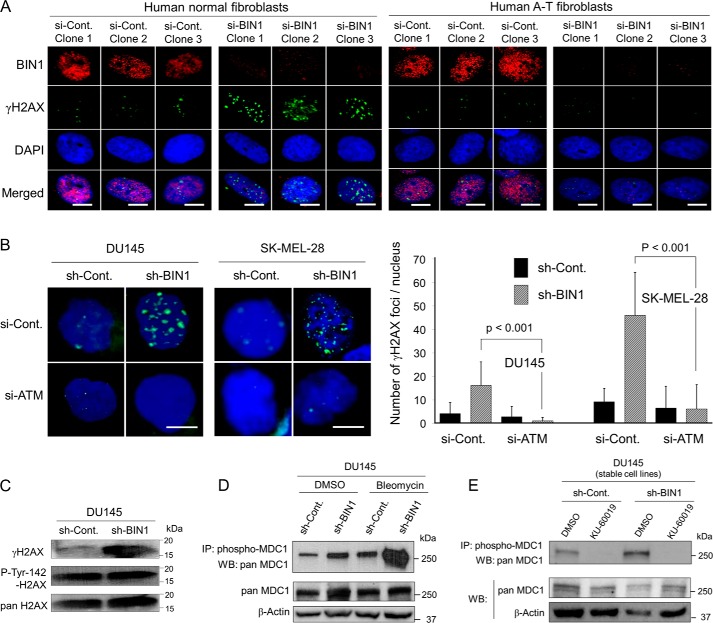Figure 7.
ATM is essential for both γH2AX formation and MDC1 phosphorylation in BIN1-depleted cells. A, human normal (GM00637) and ataxia-telangiectasia family-derived, i.e. ATM-deficient, GM16666 fibroblasts were transiently transfected with the BIN1 siRNA (si-BIN1) or the control siRNA (si-Cont). Approximately 48 h post-transfection, cells were analyzed with in situ fluorescence immunostaining. Endogenous BIN1 in the nuclei (red) and γH2AX foci (green) were detected with an anti-BIN1 antibody (99D) and an anti-γH2AX antibody, respectively. Nuclei were counterstained with DAPI (blue). Scale bar, 10 μm. Three representative images of each transfection are shown. B, γH2AX foci (green) were detected with in situ immunofluorescent staining after transient transfection of the ATM siRNA (si-ATM) or the control siRNA (si-Cont) in two cancer cell lines in the presence and absence of BIN1 (DU145±sh-BIN1 and SK-MEL-28±sh-BIN1). ∼100 nuclei in each transfection experiment were analyzed, and three independent transfection experiments were performed. The nuclei were counterstained with DAPI (dark blue). Scale bar, 10 μm. Western blotting analyses in the DU145±sh-BIN1 stable cell lines are demonstrated. C, induction of γH2AX by BIN1 depletion and phosphorylation of tyrosine 142 (pTyr-142) of H2AX. D, phosphorylation of MDC1 in the absence of BIN1 with/without brief treatment with bleomycin (20 μg/ml, 30 min); E, inhibitory effect of KU-60019, an ATM-selective chemical inhibitor (3 μm, 72 h), on the impaired BIN1-induced MDC1 phosphorylation.

